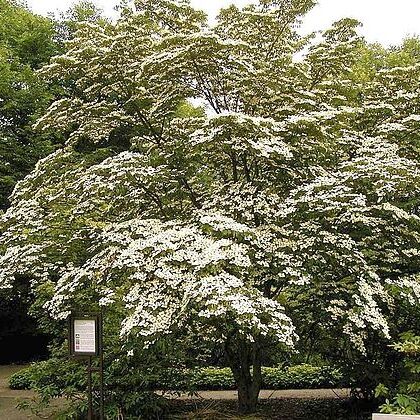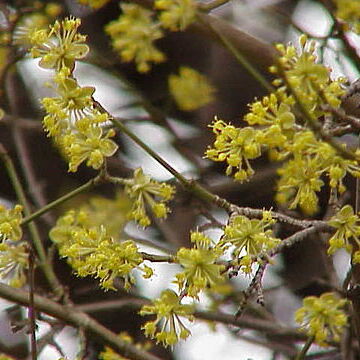Shrubs, trees, or herblike shrubs, precocious, coetaneous, or serotinous. Young shoots pubescent, rarely glabrous; trichomes curly or straight, raised or appressed. Stem sympodial, rarely monopodial. Winter buds terminal or axillary, mixed or separate, covered or exposed. Petiole slightly furrowed adaxially; leaf blade narrowly elliptic, elliptic, oblong, or ovate, glabrous to densely pubescent, lateral veins actinodromous, often raised abaxially. Inflorescence formed in previous or current year; bracts covering inflorescence or not. Sepals 4, fused; teeth absent, minute, or variously triangular. Petals 4, free, spreading, oblong to orbicular, valvate. Filaments filiform or awn-shaped, longer than style, longer or shorter than petals; anthers whitish or yellow, rarely blue, red, or purplish, ellipsoid to narrowly ellipsoid or oblong, 2-loculed. Ovary obovoid, crowned by a disk. Fruit globose, ovoid, oblong, or ellipsoid, crowned by persistent calyx, disk, and style; stones globose, ovoid, ellipsoid, oblong, sometimes asymmetric, surface smooth or ribbed, apex rarely pitted.
Fls mostly perfect, 4-merous; sep usually minute; pet small, valvate; style well developed; stigma capitate; fr a drupe, the stone bilocular (except in C. canadensis) but often only 1-seeded; fls in cymose or cymose-paniculate infls or, by reduction of the branches, in umbelliform or head-like clusters. (Chamaepericlymenum, Svida, Cynoxylon)50+, widespread but mainly N. Temp.Named hybrids include C. ×acadiensis Fernald (C. alternifolia × sericea), C. ×arnoldiana Rehder (C. amomum var. schuetzeana × racemosa), and C. ×slavinii Rehder (C. rugosa × sericea). Others include C. amomum × stricta, C. drummondii × stricta, C. amomum var. schuetzeana × drummondii, C. drummondii × racemosa, and C. racemosa × stricta.
Herbs, shrubs, or trees, clonal from rhizomes, rooting from decumbent branches, or aclonal; hairs 1-celled, arms either short and ornamented with micropapillae and calcium carbonate crystals, or long, erect, curling, and twisted. Leaves: blade lanceolate to broadly ovate; abaxial surface often papillate. Inflorescences: bracts adnate to inflorescence branches, distal portion either minute and caducous or expanding into showy, nonchlorophyllous involucres. Pedicels present or absent. Flowers: hypanthium turbinate or urceolate; petals spreading or recurved, usually cream, rarely purple; stamens exserted; anthers dorsifixed, versatile. Drupes globose, subglobose, or ellipsoid, slightly fleshy. x = 11.
Trees and shrubs, rarely rhizomatous subshrubs. Leaves opposite, rarely alter-nate, estipulate, simple, entire, usually petiolate. Inflorescence an ebracteate corymbiform or umbelliform cyme or (in our species) densely capituliform and subtended by usually 4 involucrate bracts. Flowers small, hermaphrodite, epig-ynous. Sepals 4, small, slightly united at the base. Petals 4, valvate. Stamens 4, the anthers 4-celled, dorsifixed, versatile. Ovary inferior, 2-celled, each cell with a single pendulous ovule; style 1, arising from a fleshy epigynous disc, the stigma minute, capitate. Fruit a drupe, usually containing a single seed.


